Copyright 1935, David J Gibson, CanBooks 2004 2020
PART III
The Record of Assyria and Egypt (Concluded)
Part I (The Divided Kingdom), Part II (The Assyrian and Egyptian Histories)
Thus far, in comparing the Scripture chronology with the records of Assyria and Egypt, we found that the Assyrian and Biblical dates agreed perfectly in the period 738-701 BC. Then to bring these combined records into harmony with the Egyptian history, it was necessary to lengthen Tirhakah’s reign by thirteen years, but, when this was done, the Scriptures and Egyptian history dovetailed neatly at every point of historical contact throughout 319 years, 1020-701 BC, carrying us back right into the reigns of David and Solomon. We now turn to those earlier contacts of Scripture history with the Assyrian records, before 738 BC, which we will find are not without peculiar difficulties of their own.
CONTACTS OF SHALMANESER III WITH AHABU, JEHU, AND HAZAEL
During the reign of-Shal-maneser III of Assyria (860-825 BC, usual Assyrian dating) a series of campaigns into Syria were carried out, in which the Assyrians frequently came into contact with well known Biblical figures, among whom are found Ben-hadad (II) and Hazael, kings of Syria, and Jehu, king of Israel, is mentioned once.
In his sixth year Shalmaneser III crossed the Euphrates for the second time, he tells us in inscriptions, and met and defeated a coalition of twelve kings, who had raised a great army under the leadership of “Bir-idri” (the Assyrian spelling for the Ben-hadad of Scripture, contemporary with Ahab and Jotham, kings of Israel). Among these twelve allies of Ben-hadad II, king in Damascus, the capital city of Syria, there appears the name of one as “Akhabu” of “Sir’la-a-a” generally translated as “Ahab the Israelite.” (Rogers: Cuneiform Parallels to the Old Testament pp 293 - 298; and Barton, Archaeology and the Bible, p 419) There are, however, two objections to identifying this Ahabu as the Ahab of Scripture. The first is that the name “Sir’la-a-a” has been pointed out by some scholars as not the equivalent of “Israelite” the names differ somewhat. (Urquhart, The New Biblical Guide, Vol. V) Thus “Ahabu the Sir’laite” may be of some other plate in Syria. The second difficulty is chronological. Shalmaneser mentions this Ahabu the Sir’laite as living in his sixth year, and later records receiving tribute from Jehu in his eighteenth year. (Rogers, Cuneiform Parallels to the Old Testament, pp 303 - 304, Barton, Archeology and the Bible pp 420) This leaves but twelve years between Ahabu and Jehu, while the Bible chronology -gives the interval between Ahab and Jehu as fourteen years. In other words, the Scripture account places the death of Ahab at least two years before Shalmaneser mentions Ahabu the Sir’laite. This difficulty, coupled with the difference in the name of the country, compels us to abandon the identification of this Ahabu with the Ahab of Scripture.
Turning now to the references to Ben-hadad II, king of Syria, we find he is mentioned by Shalmaneser in the campaigns of his sixth, tenth, eleventh, and fourteenth years; (Rogers, Cuneiform Parallels, pp 293 - 302; Barton, Archeology and the Bible, p 419 - 420) which by the usual Assyrian chronology are dated as 854, 850, 849, and 846 B.C. Ben-hadad’s name does not appear again on the monuments, and in the campaign of his eighteenth year Shalmaneser gives Hazael as king of Damascus and Jehu as king of the land of Omri (Israel). (Rogers, Cuneiform Parallels pp 303 - 304, Barton, Archeology and the Bible, p 420) This clearly places the accession of Hazael as sometime within these four years, between the fourteenth and eighteenth years of Shalmaneser’s reign (846- 842 BC, Assyrian dating).
The Scriptures place the death of Ben-hadad II and the seizure of the Syrian throne by Hazael near the end of the reign of Joram, just before Jehu was proclaimed king by the Israelite army in 854 B.C. (II. Kings 8:7-15, 28, 29; 9:1-3, 11-15). This date of 854 B.C. for Hazael is between eight and twelve years earlier than the date by the usual Assyrian chronology. Obviously, either our Scripture chronology is too long, or the Assyrian too short. But as we have already made the Scripture chronology as short as possible by overlapping reigns, and found agreement between it and the Egyptian dates from 1020 to 701 B.C., we are put under the necessity of lengthening the Assyrian chronology to gain harmony. (Rogers, Cuneiform Parallels, p 304, Barton, Archeology and the Bible, p 421) A change of eight years in the Assyrian dating would bring the desired harmony. The question of just where to lengthen the Assyrian chronology is not without difficulties, but if we raise the Assyrian dates prior to the end of the reign of Shalmaneser IV (773 BC Assyrian dates) by eight years, we shall find this leaves us with the minimum of difficulties. (See the Table below for changed dates.)
By the altered dates, the campaign in the sixth year of Shalmaneser II, when he defeated Ben-hadad II and mentions “Akhabu” the “Sir’laite,” comes in 862 B.C., six years after the death of Ahab the Israelite; while the campaigns of his tenth, eleventh, and fourteenth years are respectively 858, 857, and 854 BC.
In this last named year Elisha visited Damascus, and Ben-hadad II being sick (possibly of wounds received in the battle with the Assyrians) enquired of the Prophet if he should recover, and Elisha said, “He shall surely die” but told Hazael he would become king (II Kings 8:1-15). Then the campaign of Shalmaneser’s eighteenth year falls in 850 B.C., this being the time he defeated Hazael of Syria, and received tribute from Jehu of Israel. It occurred four years after Jehu began to reign.
In his twenty-first year, 846 BC, Shalmaneser III mentions Hazael once again, saying that in his campaign that year he took but four cities from Hazael of Damascus.
After this Hazael increased in strength, and took from Israel all the land east of the Jordan (II Kings 10:32-33), and in 808 B.C. he invaded Judah and left Joash, its king, suffering from severe wounds (II Chronicles 24:23-25.) Shortly after this, Hazael died and was succeeded by his son, Ben-hadad III (II Kings 13:3, 24).
APAD-NlRARI III AND MARI’ OF DAMASCUS
Meanwhile, in Assyria, Shalmaneser III had passed away in 833 BC, and Shamshi-adad V had reigned for thirteen years. Then about 820 BC Adad-nirari III ascended the throne and ruled until 791 BC. This king carried out a number of campaigns against Syria and the Mediterranean coast, recorded in the eponym lists as in 814, 813, 811(?), and 805 B.C. The three first of these were certainly while Hazael was still reigning in Damascus, as we know Hazael reigned until after the death of Joash in 807 B.C. (II Chronicles 24:23-25). The campaign of 805 BC is near the date that Ben-hadad III succeeded Hazael, probably it was shortly after. It was about this time that Joash the king of Israel (perhaps with his son Jeroboam II. as co-regent and general of the army after 804 BC) defeated Ben-hadad III three times and recovered much lost territory (II Kings 13:25).
Now Adad-nirari III has left an inscription giving an account of his wars in the west, in which he claims to have “conquered from the bank of the Euphrates the Hittite country, Amurru in its entirety, Tyre, Sidon, the land of Omri (Israel), Edom, Palastu (Philistia), to the coast of the great sea of the west.” He continues:
I marched against Damascus, I shut up Mari’, the king of Damascus, in Damascus, his royal city.. The fear of the brightness of Ashur his (or my) lord, smote him to earth, he took my feet and ‘surrendered. 2,300 talents of silver, 20 talents of gold, 3,000 talents of copper, 5,000 talents of iron, colored garments, linen(?), an ivory bed, an ivory couch with inlaid border, his possessions, his goods in unmeasured number in Damascus, his royal city, I took in his palace. (Rogers, Cuneiform Parallels to the Old Testament, pp 305 - 306, Barton Archeology and the Bible p 424)
Now this victory of Adad-nirari III over Mari’ could not have been in any of the campaigns mentioned above, for as we have seen, Hazael was reigning when the first three took place, and the last campaign (805 BC) falls in the reign of Hazael’s son, Ben-hadad III. Mari’ must have been a successor to Ben-hadad III, and so Adad-nirarl’s recorded victory seems to come in the latter part of his own reign. Ben-hadad III evidently reigned to as late as 799 BC, for Amos, who prophesied early in Uzziah’s reign beginning in 800 BC, speaks of him as then living (Amos 1. 1-5). Accordingly, the campaign of Assyria against Marl’ must be dated within the last eight years of Adad-nirari’s reign, 799-791 BC. Although the eponym list does not record any expeditions into the west in these eight years, there are several years in which the name of the country against which Assyria fought cannot be read by reason of breaks in the tablet. This is so with 795 and 794 BC, while the year 793 BC is strangely entirely omitted (by usual Assyrian dating these years are 787, 786, and 785 BC).
Hence, we may surmise that the defeat of Mari’ of Damascus by Adad-nirari III of Assyria may have been in one of these three years, and so we have dated the event as “about 794 BC,” and any difficulties that might here be brought up concerning the contacts of both the Hebrews and the Assyrians with the kings of Damascus are avoided.
CONTACT WITH SHALMAN (SHALMANESER IV)
Hosea, a prophet to the ten-tribe kingdom of Israel, near the close of the reign of the prosperous king Jeroboam II (Hosea 1:1), who reigned 804-763 BC, warned the nation that “all thy fortresses shall be spoiled, as Shalman spoiled Beth-arbel in the day of battle” (Hosea x:14). “Shalman” is but a shortening for “Shalmaneser,” and Shalmaneser IV reigned only a little before Hosea’s time, 791-781 BC.
He was the successor of Adad-nirari, and his spoiling of Beth-arbel was still fresh in the people’s memory. Twice did he make an expedition into the west, first in 783 BC. (775 Assyrian dating) “against the land of cedars” (Amanus), and again in 781 B.C. (773 Assyrian dating) “against the city of Damascus.” (Rogers, Cuneiform Parallels to the Old Testament, p 232)
It would be in this latter campaign that he approached near enough to Israel to spoil “Beth-arbel in the day of battle,” and the date for this falls about the middle of the reign of Jeroboam II.
CONTACT WITH JAREB KING OF ASSYRIA
From the time of Ben-hadad II of Damascus and the first mention of Jehu upon the Assyrian monuments down to the early part of the reign of Jeroboam II there is no real difficulty in paralleling the Assyrian records with the Scripture account, as we have now seen, provided the Assyrian dates are raised eight years.
Also we saw before that after 738 BC there were no difficulties in the parallel chronologies. But in the interval, after the death of Shal-maneser IV, between 781 and 738 BC, the chronological problems are plentiful.
The Bible chronology just here is unquestionably longer than the Assyrian eponym lists. By some authorities there is a difference of as much as fifty-one years, and they have argued that many years have been omitted from the Assyrian lists. If there was an omission-and it seems necessary to believe this is so-our shorter Bible chronology makes it only eight years (certainly not over twelve years), and a small omission such as this would be less noticeable on the monuments than one of fifty years.
It is indeed remarkable that just where an omission in the Assyrian yearly eponym names has been suggested the Scriptures should twice mention an Assyrian king whose name has not yet been found in any inscription.
Hosea in the latter years of the reign of Jeroboam II., 804-763 BC, says: “When Ephraim (the northern kingdom of Israel) saw his sickness, and Judah saw his wound, then went Ephraim to the Assyrian, and sent to king Jareb: yet could he not heal you, nor cure you of your wound” (Hosea v 13), and again he prophesies that Israel’s idol god “shall be also carried to Assyria for a present to king Jareb” (Hosea x 6). Some able scholars have maintained that the translation in these passages might be “the hostile king” instead of “king Jareb,” but if the translation of both the King James Version and the Revised is correct we have a very interesting confirmation of an omission in the Assyrian records; and this king’s reign would serve to fill the gap left in the Assyrian dates by the longer chronology of the Bible. With this alteration, the king list for Assyria, from Shalmaneser IV to Tiglath-pileser IV will be as follows:
- Shalmaneser IV 791-781 B.C.
- Ashur-dan III 781-772 B.C.
- Jareb (?) 772-764 B.C.
- Adad-nirari IV 764-754 B.C.
- Ashur-nirari V 754-745 B.C.
- Tiglath-pileser IV 745-727 B.C.
CONTACTS OF MENAHEM OF ISRAEL WITH PUL OR TIGLATH-PILESER IV
Menahem, king of Israel, reigned for nearly ten and a half years, 762-751 B.C. At some time within these ten years, Scripture tells us, “Pul the king of Assyria came against the land: and Menahem gave Pul a thousand talents of silver, that his hand might be with him to confirm the kingdom in his hand… . So the king of Assyria turned back, and stayed not there in the land” (II Kings 25:19, 20). Thus we see that Menahem and Pul were contemporaries for a part of their reigns at least. When we turn to compare this account with the Assyrian records we find both agreement and difference; agreement of records, but apparent difference in chronology.
Tiglath-pileser IV of Assyria, is called “Pulu” by the Babylonians, and thus the Pul of the Bible seems clearly to be the same as Tiglath-pileser. In the palace of Tiglath-pileser IV at Nimroud, a number of inscriptions have been found, one of which apparently confirms the view that Menahem and Tiglath-pileser were contemporaries. The name of the king is broken away at the beginning of this inscribed wall tablet, but as it came from the palace of Tiglath-pileser IV it has been ascribed to him with the rest of the inscriptions from the palace. Esar-haddon, who reigned half a century later, began to remodel this palace for his own use, and the inscribed wall tablets suffered much at his hands. He evidently intended to erase the inscriptions they bore, preparatory to displaying on them records of his own exploits and wars, but his death stopped this destructive work and saved many of the original records from complete oblivion. (Barton: Archaeology and the Bible, p. 424)
While the particular tablet referred to above is much defaced, yet on it are plainly read, among those who paid tribute to Assyria, two names well known to us from the Scriptures, “Reson of Damascus” and “Menahem of Samaria.” (Rogers: “Cuneiform Parallels,” p. 316; Barton: “Archeology and the Bible,” pp. 424-425)
This confirms the Biblical record in stating that Menahem paid tribute to the king of Assyria, and remembering that Tiglath-pileser IV was also known as Pulu, we have only what we might have expected. But the moment we begin to look at the dates difficulties arise to face us, for Menahem died in 751 BC, six years before Tiglath-pileser took his seat on the throne of Assyria in 745 BC, as recorded in the eponym canon. (Rogers: “Cuneiform Parallels,” p. 234) And beside this, Assyriologists have ascribed the payment of tribute, recorded in this inscription, to the campaign Tiglath-pileser is known to have made into the west in 738 BC, thirteen years after Menahem’s death, and which campaign, as we have already mentioned, fits with the one the Bible speaks of as occurring in the reign of Pekah (II Kings 25:29). Clearly we must reconsider the accepted chronologies just here to discover the real truth of the matter. We have no ground to question the accuracy of either the Bible account as it has come down to us through the centuries, or of the Assyrian tablets recovered from the dust of many years; the trouble is far more likely to be in the way we have used these records, and the dates we have ascribed to them. Let us therefore look at some of the proposed ways of getting rid of the difficulty.
It has been contended that the Biblical Pul is not the same as Tiglath-pileser, and I Chronicles 5:26 has been quoted to support this; it reads, “And the God of Israel stirred up the spirit of Pul king of Assyria, and the spirit of Tilgath-pilneser king of Assyria.” This would indicate two persons, but others have maintained that the passage should be translated, “the spirit of Pul king of Assyria, even the spirit of Tilgath-pilneser.” If the Biblical Pul should be a different person to Tiglath-pileser (and we do not know that he was the only king to be also named Pul) it would relieve the problem from the Scripture side, but quite fails to shed any light on what we find in the inscriptions. It still does not make Menahem’s reign as late as 738 BC when he is supposed to have paid tribute to Tiglath-pileser IV.
Some have arbitrarily overlapped the reigns of the Israelite kings to bring Menahem down to 738 BC. But this rude attempt to force the Bible into agreement with our construction of Assyrian chronology has many objections to face. There is nothing in the Scriptures to indicate that Menahem’s reign overlapped that of Pekah. Secondly, such overlapping throws the chronology and history of Judah into the utmost confusion. Also the relation of the Bible chronology to the Egyptian dates is seriously disturbed. And, finally, such over-lapping is not in harmony with the earlier contacts between Israel and Assyria.
Instead of arbitrarily overlapping the reigns of the kings of Israel, which method only lands us into more difficulties than we had before, let us turn to the Assyrian inscriptions to see if they can have any other construction placed upon them.
The eponym list fixes the accession of Tiglath-pileser as “on the thirteenth day of the month of Iyyar” (April-May) in 745 BC, following a revolt in 746 BC. (Rogers: “Cuneiform Parallels,” pp. 234. 308; Barton: “Archeology and the Bible,” p. 424) Previous to this his name appears to have been Pulu, but he adopted the time-honoured name of Tiglath-pileser when he ascended the throne. (Barton: “Archeology and the Bible,” pp. 65-66) Neither was he of the royal line. It may not be without significance that the Bible gives the name of the Assyrian king who invaded Israel in Menahem’s reign as Put instead of Tiglath-Pileser which is used uniformly elsewhere in the Book of Kings. Is it therefore possible that Tiglath-pileser or Pul made this invasion before the year 745 BC?
Now it is a fact that the eponym list does record two western campaigns that would fit with the date of Menahem’s reign, 762-751 BC. The first one was in 755 B.C., “against the land of Hadrach” (connected with Damascus in Zechariah 4::1), and again the next year, 754 B.C., “against the land of Arpadda” (Rogers: “Cuneiform Parallels,” pp. 233-234) The former one came the closest to Israel. The date of this campaign against Hadrach would be the sixth or seventh year of Menahem, but as yet we have no indication that Pulu had any connection with this expedition. Turning again to Tiglath-pileser’s account of the western wars of 734-732 BC, we read his words: “[Bit-Khumria] (i.e., Israel) all of whose cities, on my former campaigns I had added [to my territory] … into captivity had carried.” (Rogers: “Cuneiform Parallels,” p. 319) If Tiglath-pileser had added these cities of Israel to his territory on his “former campaigns,” then he must have invaded Israel at least twice before this. One of these two times would be the western campaign of 738 BC, which as previously remarked is evidently the one referred to in II. Kings 15:29. But the eponym list before this records no other western campaign reaching as far as Israel until we come back to the one against Hadrach in 755 BC.
Is this the date when he made the earlier of those “former campaigns” against Israel?
It is here especially interesting to note that both the Scriptures and the inscriptions of Tiglath-pileser or Pul (granting that the two names belong to but one person) agree in this important fact, that this king of Assyria made three campaigns against Israel. Both sources agree the first was during the reign of Menahem of Israel. Both again agree the third was that which saw the siege and fall of Damascus, 733-732 BC. Both once more agree in regard to the second campaign: Tiglath-pileser referring back to it states that all of these cities of Israel he had then taken, and “… into captivity had carried, [and] had left for him (for Pekah the king) Samaria alone” (Rogers: “Cuneiform Parallels,” p. 319) while the Bible records: “In the days of Pekah king of Israel came Tiglath-pileser king of Assyria, and took Ijon, and Abel-beth-maachah, and Janoah, and Kedesh, and Hazor, and Gilead, and Galilee, all the land of Naphtali, and carried them captive to Assyria” (II Kings 15:29). Truly, but “Samaria alone” was left to Pekah their king!
The agreement that there were three invasions is perfect, our difficulty lies in determining the correct date for the first invasion. It should be remarked that the same tablet which bears the name of Menahem, also speaks of “Azariah of Ja’udi” and it is still not perfectly clear if this is not Uzziah (Azariah III) of Judah.
Prof. R. W. Rogers says in a footnote, (Ibid, p. 311) “The name I Azariah’ corresponds exactly with the name of the King Azariah of Judah (II Kings xv. I, 2), …” and the name ‘Ja’udi’ ‘Yaudi,’ corresponds perfectly with ‘Judah.’ However, he decides against “Ja’udi” being Judah, and makes it a district of Zenjirli. But if this Azariah of Ja’udi should prove to be Uzziah (Azariah III) of Judah, then this tablet would have to be dated as before 748 BC, the year Uzziah died.
The eponym list speaks of a long series of revolts in Assyria, beginning in 763 BC and continuing down to 758 BC. These internal troubles probably mark an important phase of Assyrian history. Thereafter the country seems to have remained comparatively quiet for twelve years, when the revolt of 746 BC suddenly brought the existing royal line to an end, and Tiglath-pileser took the throne. (Rogers: “Cuneiform Parallels,” pp. 233-234)
What relation did Tiglath-pileser, then called Pulu, hold to the throne during those twelve years? Did he hold a position sufficiently high to enable the Hebrews to style him “king” in the campaign of 755 BC? For, if so, herein would be the solution to the problem. Prof. G. A. Barton says he was “an able general” before his accession in 745 BC, (Barton: Archeology and the Bible, Page 65), but unfortunately we seem unable to know just what positions and titles Pul held at this time. However, there can be little doubt but that he took an important part in the campaign of 755 B.C. against Hadrach (which place is named in the tablet which mentions Menahem), (Rogers: “Cuneiform Parallels,” pp 31) and quite possibly headed it, and this may be the war he is referring to in his wall tablet.
This point of contact with Assyria will be found on Table II below, dated as 755 B.C., but accompanied by an interrogation mark.
A CONTACT WITH MESHA KING OF MOAB
The now well-known Moabite Stone bears an account of the struggles of Mesha king of Moab with Israel, and commemorates the gaining of independence. The Scriptures record that Mesha “rebelled against Israel after the death of Ahab,” 868 BC. (II Kings 1:1). Ahaziah, Ahab’s son, did not go against Moab, being injured in a fall and confined to his bed, but Joram his brother, who was then made coregent, proceeded against Moab, having Jehoshaphat king of Judah and the Deputy of Edom as his allies. Moab was defeated (II Kings 3:4-27; I Kings 22:47), but the rebellion was not successfully quelled. The rest of the story we learn from the Moabite Stone. Mesha tells us:
Omri, king of Israel-he oppressed Moab many days, because Chemosh was angry with his land. And his son (i.e., Ahab) succeeded him, and he also said, I will oppress Moab. In my day he spoke according to [this] word, but I saw [my desire] upon him and upon his house, and Israel utterly perished forever. Now Omri had possessed all the land of Medeba and dwelt in it his days, and half the days of his son, forty years, but Chemosh restored it in my day. (Barton: Archeology and the Bible, pp 421 - 422)
From this partial quotation it will be seen that Mesha dates Moab’s “oppression” from some time in the reign of Omri to the end of the reign of Omri’s son (this was Ahab), when he saw his desire upon Ahab (Ahab perished in battle). This agrees with the Scripture statement of the time of Mesha’s rebellion, which was “after the death of Ahab.” Next it is to be noticed, he states Omri “possessed” the land of Medeba all his days, and “half the days of his son, forty years.” “His son” here seems to mean the son of the king who has received most mention thus far, the one who said, “I will oppress Moab,” and this was Ahab.
Ahab is referred to far more often than any other, but not by name, as if Mesha so utterly hated and detested him that he would not even have the name written on the monument. So “his son,” meaning the son of Ahab the Oppressor, is Joram, and it was during Joram’s reign that Mesha gained full independence from Israel. Now, from the beginning of Omri’s reign, in 900 BC, to the middle of Joram’s reign, 860 BC (“half the days of his”-Ahab’s-“son”) is exactly forty years, just as Mesha claims. This is another striking confirmation of the Biblical chronology.
When Mesha tells us it was in the middle of Joram’s reign that he gained complete independence, we have proof that he did not set up this monument until after Joram’s reign had ended, in 854 BC. In that year Jehu cut off the house of Ahab, slaying every descendant he could find. This is clearly what Mesha is referring to when he declares he saw his desire upon Ahab’s house, and “Israel utterly perished forever.” The representative house of Israel, Ahab’s, did then “utterly perish forever.”
SUMMARY OF HISTORICAL CONTACTS
Having now gone over the points of historical contact of the Assyrians with the Hebrews, and of the Hebrews with the Egyptians, within the period we undertook to deal with, we find that while there are some difficulties, on the whole there is remarkable agreement. For instance, apart from historical contacts with Assyria, if we had no Assyrian records, we would have no difficulty in placing the Scripture history side by side with the Egyptian chronology and linking every point of contact together with great ease.
From the mention of Shishak in Solomon’s time, 958 BC, to the appearance of Tirhakah in 701 BC is, in the Bible, 257 years, exactly the same interval as given in Breasted’s Egyptian Chronology, 945-688 BC, and the intervening points of contact are also spaced to harmonize perfectly. This should not be overlooked, for it shows we are on firm ground. Each source of chronological data mutually confirms the other.
Again, turning to the Assyrian records, as already mentioned more than once, after 738 BC there is perfect harmony with the Scripture chronology. The earlier contacts with Assyria also agree if we are willing to raise the Assyrian dates by eight years, and to fill the gap left in the eponym canon with Jareb king of Assyria, twice mentioned by Hosea; and this leaves the mention of Menahem by Tiglath-pileser IV as the only serious difficulty remaining. We have tried to find a solution to that also. But even so, we find much confirmatory data, and regardless of whether one prefers to accept the chronology of the Bible or the commonly used Assyrian dates, they are compelled to acknowledge the other source of chronological material as not only important, but possessing a high degree of reliability.
Finally, when we consider the double amount of confirmation given to the Bible chronology, by the Egyptian records on one hand and the Assyrian on the other, beside such other confirmation as the Moabite Stone, we feel that it must be admitted by all that the Bible Chronology, in this period which we have studied, is not only the most reliable chronology, but, not lacking confirmation at any point, it is proved to be fully accurate and true, just as we would expect God’s inspired word to be.
“Thy word is truth” (John 17:17)
Copyright CanBooks 2004 2019
Click here for Table II which contains a Chronology Table of the events listed in this article.
In Part I of this study, the chronology of the Divided Kingdoms of Judah and Israel are examined.





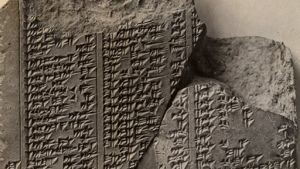



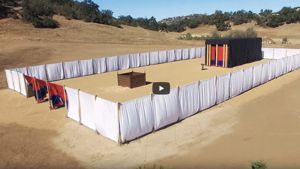
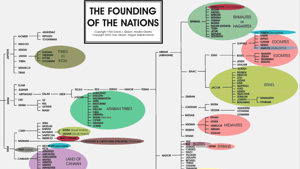

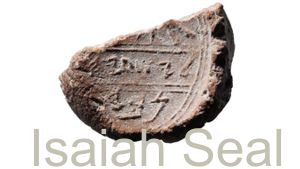
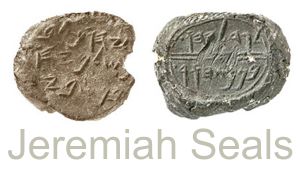







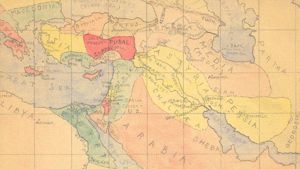

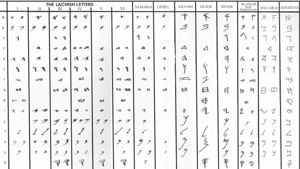
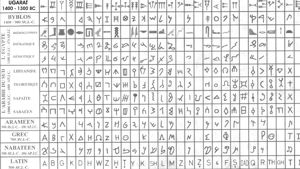
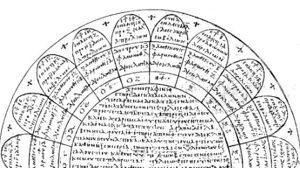
Page Discussion
Membership is required to comment. Membership is free of charge and available to everyone over the age of 16. Just click SignUp, or make a comment below. You will need a user name and a password. The system will automatically send a code to your email address. It should arrive in a few minutes. Enter the code, and you are finished.
Members who post adverts or use inappropriate language or make disrespectful comments will have their membership removed and be barred from the site. By becoming a member you agree to our Terms of Use and our Privacy, Cookies & Ad Policies. Remember that we will never, under any circumstances, sell or give your email address or private information to anyone unless required by law. Please keep your comments on topic. Thanks!